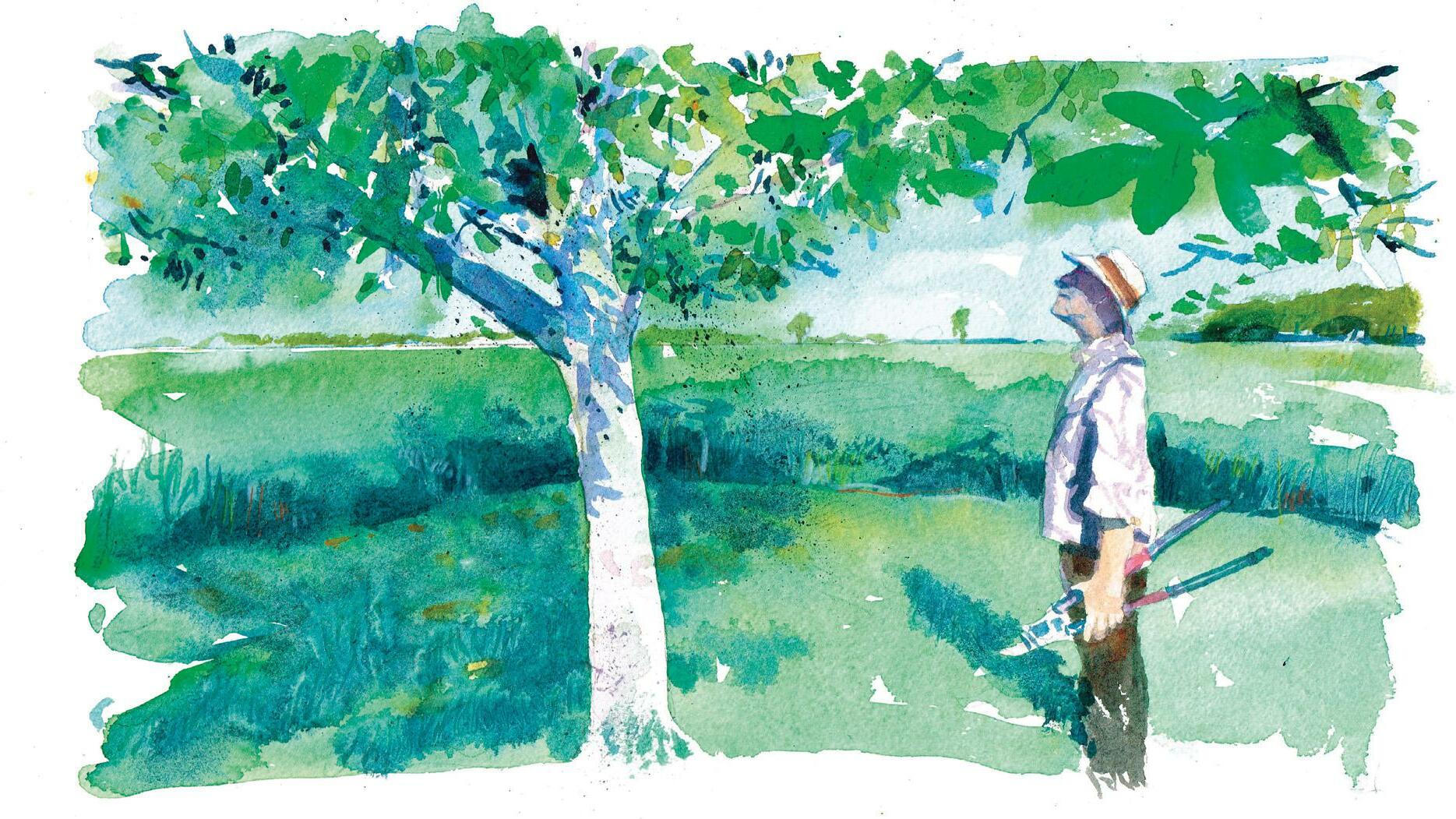
S TANDING under the beech tree, looking up into the cave roof of blue shade, the density of the tree’s canopy blocking out the day’s sunshine. In late spring and summer, the beech is the parasol tree, casting glad, cooling shade for the weary walker, the picnicker and, doubtless, once upon a time, for persecuted outlaws, the Robin Hoods.
No British tree, not even oak, has such presence as beech. A single beech tree, such as this one in the copse, is sufficient in itself to create the quintessence of beechwood: the sense of entering a churchy, sacred space: the immense grey pillars, that vaulted ceiling, the mystried gloom.
Oak is the hail-fellow King of the Wood, beech the Ice Queen. Oak is one trope for Britain, hearty, rustic and guileless; the smooth- boled beech is the alternative Britain, the shadow self, secret, minimalist, spiritual.
Oh, yes, and standing under a beech causes me to philosophise even when working, as I am this morning, lopping select lower branches with long-handled pruners to make ‘tree hay’. Collecting tree leaves for feeding livestock, usually from pollards, is a vanishingly small component of farming, although once it was widespread across Europe and likely predates the scything of grass to make ‘proper’ hay.
I only have a handful of pollards, so I prune lower limbs of hazel, beech, sallow, hawthorn, blackthorn, elm, ash, lime and field maple in copse, hedge, orchard and garden. However, only those trees brazenly daubed by a dob of white paint are pruned, the trees/bushes I know categorically do not have birds nesting below 20ft and so remarked.
This story is from the {{IssueName}} edition of {{MagazineName}}.
Start your 7-day Magzter GOLD free trial to access thousands of curated premium stories, and 9,000+ magazines and newspapers.
Already a subscriber ? Sign In
This story is from the {{IssueName}} edition of {{MagazineName}}.
Start your 7-day Magzter GOLD free trial to access thousands of curated premium stories, and 9,000+ magazines and newspapers.
Already a subscriber? Sign In

Save our family farms
IT Tremains to be seen whether the Government will listen to the more than 20,000 farming people who thronged Whitehall in central London on November 19 to protest against changes to inheritance tax that could destroy countless family farms, but the impact of the good-hearted, sombre crowds was immediate and positive.

A very good dog
THE Spanish Pointer (1766–68) by Stubbs, a landmark painting in that it is the artist’s first depiction of a dog, has only been exhibited once in the 250 years since it was painted.

The great astral sneeze
Aurora Borealis, linked to celestial reindeer, firefoxes and assassinations, is one of Nature's most mesmerising, if fickle displays and has made headlines this year. Harry Pearson finds out why

'What a good boy am I'
We think of them as the stuff of childhood, but nursery rhymes such as Little Jack Horner tell tales of decidedly adult carryings-on, discovers Ian Morton

Forever a chorister
The music-and way of living-of the cabaret performer Kit Hesketh-Harvey was rooted in his upbringing as a cathedral chorister, as his sister, Sarah Sands, discovered after his death

Best of British
In this collection of short (5,000-6,000-word) pen portraits, writes the author, 'I wanted to present a number of \"Great British Commanders\" as individuals; not because I am a devotee of the \"great man, or woman, school of history\", but simply because the task is interesting.' It is, and so are Michael Clarke's choices.

Old habits die hard
Once an antique dealer, always an antique dealer, even well into retirement age, as a crop of interesting sales past and future proves

It takes the biscuit
Biscuit tins, with their whimsical shapes and delightful motifs, spark nostalgic memories of grandmother's sweet tea, but they are a remarkably recent invention. Matthew Dennison pays tribute to the ingenious Victorians who devised them

It's always darkest before the dawn
After witnessing a particularly lacklustre and insipid dawn on a leaden November day, John Lewis-Stempel takes solace in the fleeting appearance of a rare black fox and a kestrel in hot pursuit of a pipistrelle bat

Tarrying in the mulberry shade
On a visit to the Gainsborough Museum in Sudbury, Suffolk, in August, I lost my husband for half an hour and began to get nervous. Fortunately, an attendant had spotted him vanishing under the cloak of the old mulberry tree in the garden.